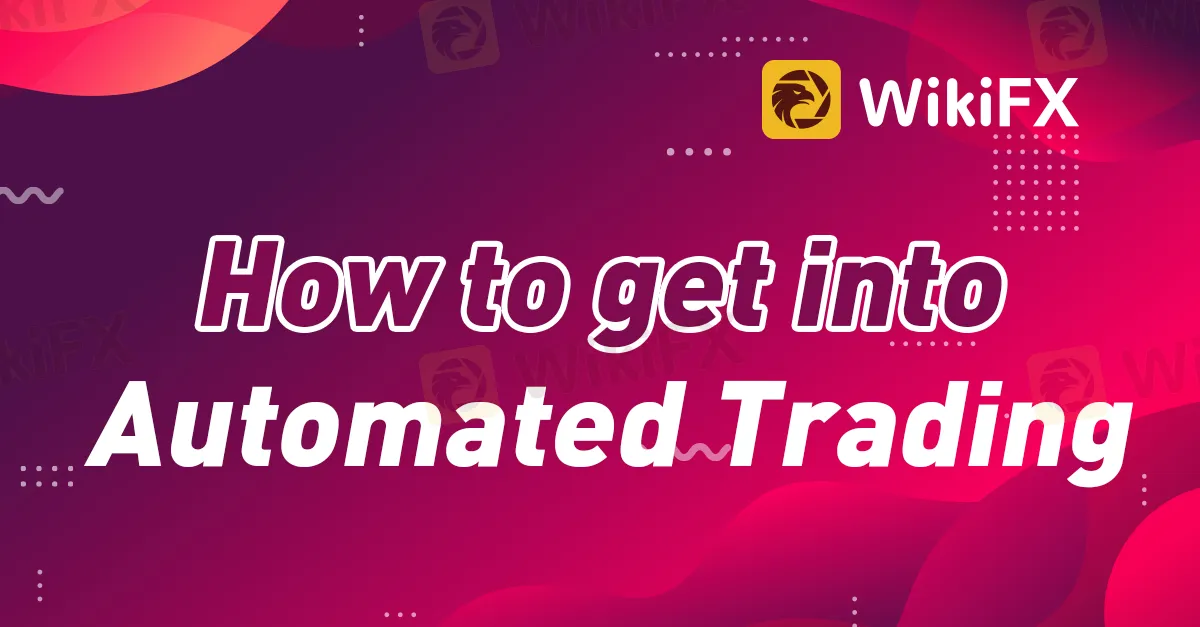简体中文
繁體中文
English
Pусский
日本語
ภาษาไทย
Tiếng Việt
Bahasa Indonesia
Español
हिन्दी
Filippiiniläinen
Français
Deutsch
Português
Türkçe
한국어
العربية
How to get into Automated Trading
Abstract: In this article, we will explore the best ways to get into automated trading and the steps you need to take to get started.

Automated trading has become increasingly popular over the years, allowing traders to take advantage of algorithmic models and technical indicators to buy and sell securities on the financial markets. And with the rise of internet technologies that can do the programming for you, you do not need a degree in IT to whip up a good trading program. In this article, we will explore the best ways to get into automated trading and the steps you need to take to get started.
1. Develop a trading strategy
Before you can start executing trades using an automated system, you need to have a strategy in place. A trading strategy outlines your entry and exit rules and helps you decide when to buy and sell securities. To develop a strategy, you need to have a good understanding of your risk tolerance, the market conditions, and the securities that you want to trade. You also need to familiarize yourself with on simple coding mechanics. Or Google free trading bots that you can edit for your own use
2. Choose a trading platform
Once you have developed your trading strategy, its time to choose a trading platform that will allow you to automate your trades. To do this I recommend you use WikiFx. This platform will allow you to compare broker to find the regulated brokers with the best conditions.
3. Select a data provider
To automate your trades, you will need access to real-time market data. Most trading platforms offer this service, but you may also want to consider subscribing to third-party data providers for additional data sources and analysis. I also recommend WikiFx in this case because they offer a VPS with excellent trade executions so you will be able to let your bot trade 24/7.
4. Backtest your strategy
Before you start trading with real money, its important to backtest your strategy using historical market data. This process allows you to see how your strategy performs under different market conditions and identify any weaknesses that you can improve upon.
5. Optimize and refine your strategy
Once you have backtested your strategy, you may need to optimize and refine it to improve performance. This can involve adjusting your entry and exit rules, using different technical indicators, or tweaking your risk management rules.
6. Monitor your strategy
Automated trading systems require constant monitoring to ensure that they are performing as expected. You will need to keep an eye on your systems performance, adjust settings as necessary, and stay up-to-date with any changes to the market or your data sources.
7. Start small and grow your account
Once you are ready to start trading with real money, its important to start small and scale up gradually. This allows you to test your strategy and reduce the risk of large losses. As you gain experience and confidence in your system, you can gradually increase the size of your trades and grow your trading account.
In conclusion, automated trading can be a powerful tool for traders who want to take advantage of algorithmic models and technical analysis. By following these steps, you can develop and test a trading strategy, choose a trading platform and data provider, and start trading with confidence. Remember to monitor your systems performance and adjust your strategy as necessary to ensure long-term success.

Disclaimer:
The views in this article only represent the author's personal views, and do not constitute investment advice on this platform. This platform does not guarantee the accuracy, completeness and timeliness of the information in the article, and will not be liable for any loss caused by the use of or reliance on the information in the article.
Read more

Indonesia officially joins the BRICS countries
Indonesia's decision to join the BRICS group will not only enhance economic cooperation within BRICS countries but is also expected to have a profound impact on global trade, investment, and the currency system.

Trump's new tariffs, the dollar may fall
As Trump nears taking office, the key question is whether these new tariffs will be implemented, and whether the dollar can continue to rise.

Risk Management: Turning Potential Into Profit
In Forex Trading, Without Effective Risk Management, You Risk Huge Losses and the Complete Depletion of Your Account.

Is it a good time to buy Korean Won with the current depreciation?
The exchange rate of the South Korean won in 2025 is expected to be highly uncertain, influenced primarily by the dual challenges of economic slowdown and political instability.
WikiFX Broker
Latest News
Ghana Trader Jailed for $300K Forex and Crypto Scam
US Dollar Surge Dominates Forex Market
Hong Kong Police Bust Deepfake Crypto Scam Syndicate Involving $34 Million
Is it a good time to buy Korean Won with the current depreciation?
Pepperstone Sponsored the "Aston Martin Aramco Formula One Team"
ACY Securities Integrates MetaTrader 5 to Enhnace Copy Trading Service
Soegee Futures Review: Should You Trust This Broker?
Malaysian Pilot Loses RM1.36 Million in UVKXE Investment App Scam
Indonesia officially joins the BRICS countries
Attention! Goldman Sachs Cuts Gold Target to $2910
Currency Calculator






